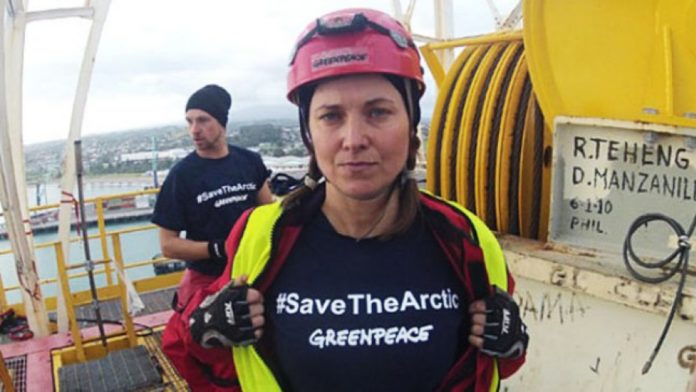If you thought Pub Politics 1 with Chloe Swarbrick, Paula Bennett, David Seymour and Chris Fowlie departing cannabis was great.
If you thought Pub Politics 2 with Paul Goldsmith, David Cunliffe, Efeso Collins and Damien Grant was hilarious.
If you thought Pub Politics 3 with Goff and Tamihere beating each other up for an hour gaining nationwide media attention was shocking.
Then brace yourself for Pub Politics 4!
Tonight at 8pm Chapel Bar live streamed on TDB ‘What will be the big issues of 2020 election’
featuring:
Matt McCarten – Former Chief of Staff for Labour Party
Lucy Lawless – Activist & Actor
Bishop Brian Tamaki – Apostle of Christ
Mike Treen – Unite Union Boss
You read that right! Are you not entertained? We keep bringing you debate you can’t get, see or hear anywhere else in the NZ political broadcasting spectrum!
Register your interest here and this is strictly first in, first served in terms of the Chapel Bar 147 Ponsonby Rd on the night. I suggest you get there by at least 7pm to guarantee a spot inside.






Edited (shortened) press release for Climate change week.
https://www.news.com.au/technology/environment/climate-change/fiveyear-period-ending-2019-set-to-be-hottest-on-record/news-story/895e9c2239979888a2089a1311976c9f
Latest 23/9/19 ‘Australian newscorp’
(Quote) “Five-year period ending 2019 set to be hottest on record.
A few days after kids across the globe marched in support of environmental issues, the UN has released a new report on the current state of the planet, and it’s not pretty reading.” (un-quote)
We at CEAC hope That – Hon’ Jacinda Ardern and her NZ Government successfully get the Global Village to agree to ‘serious reductions in GHG emissions’ at this week’s Climate Change “Action Summit” special meeting at the UN in New York this week at it is their final chance for our future.
https://www.stuff.co.nz/environment/climate-news/116002384/climate-change-accelerating-world-leaders-feel-the-heat-in-upcoming-un-climate-summit
Quote; “Only those with new, specific and bold plans can command the podium and the ever-warming world’s attention, Secretary-General Antonio Guterres said.
So sit down, Brazil. Sit down, Saudi Arabia. Sit down, Poland. “People can only speak if they come with positive steps. That is kind of a ticket,” Guterres said. “For bad news don’t come.”
As if to underscore the seriousness of the problem, the UN’s World Meteorological Organisation released a science report Sunday showing that in the last several years, warming, sea level rise and carbon pollution have all accelerated.”
Climate change is here – we all need to do our part.”
Monday 23rd September 2019.
Press Release: Citizens Environmental Advocacy Centre
Climate change is happening.
CEAC – compendium facts tribute to ‘Climate Change Week’
https://www.stuff.co.nz/science/115098866/exceptionally-rare-warming-above-antarctica-may-be-affecting-nzs-weather
• So how do we get more out of life by using less energy and lower the air pollution/emissions that is increasing global warming?
ANSWER; Use public transport and rail freight rather than the National Party policy to commit 90% of all NZ’s freight task to road freight but this Government (EY) 2016 transport study shows we need far more rail use.
https://www.kiwirail.co.nz/assets/Uploads/documents/70bd71037f/The-Value-of-the-Rail-in-New-Zealand.pdf
http://www.scoop.co.nz/stories/PO1908/S00391/ceac-supports-tribunal-criticism-of-crown-freshwater-failure.htm
On August 29th 2019 CEAC wrote an article showing how our rural area was exposed from overuse of truck freight that will cause road runoff pollutants into our waterways now since (quote) ‘our environment is now increasing with more trucks carrying all stock, aggregate, fertilser, supplies for farming, eg; fencing, draining pipes, earthmoving equipment, aggregate, stock feed, and many other supplies, so history now tells us that these trucks are also causing more carbon/emissions and pollutants from ‘road runoff of effluent, and vehicle contaminants’ EG; tyre dust, brake/clutch oil/exhaust pollutants as discussed in our press release.’ (unquote)
• How can we reduce (micro-plastics) along with other pollutant impacts to our steams/rivers/lakes/aquifers/drinking water/coastal regions?
IMPORTANT TO CONSIDER;
We must also stop the discharge of those tyre dust micro-plastics ‘road runoff’ into our coastal estuaries as this allows the microplastics to be carried by tidal/current flows to our polar ice shelves and snowfields which will increase snow and ice melting as a team of German scientists two weeks ago discovered tyre particulates have been discovered ice the polar snow and icecaps. https://phys.org/news/2017-02-tiny-plastic-particles-tyres-clogging.html
https://onlinelibrary.wiley.com/doi/full/10.1002/app.45701
While NZ could become a world leader by finally producing the first ‘new commercially available ‘eco-friendly vehicle tyre composition’ since it has been science tested but yet to go into production,
‘Eco-friendly vehicle tyre composition’ has been on the scientific horizon and has been known since 2001, – so why is it not in widespread use by now?
Perhaps ‘Big Oil’ felt it would damage their financial status after an oil free component vehicle tyre may be popular as they can be made of grass, trees, corn, and perhaps no petrochemicals may be needed to build the first “Eco-tyre?
(QUOTE) “According to the Rubber Manufacturers Association, each tire produced takes 7 gallons of oil”
These two documents provide the evidence to show about “road dust from tyres is an overlooked pollutant of our waterways.
Tyre dust is micro-plastics.
https://ec.europa.eu/environment/integration/research/newsalert/pdf/277na4_en.pdf
https://pubs.acs.org/doi/abs/10.1021/es400871j
• If the world is to limit the effects of global warming, drastic changes must be made and the Intergovernmental Panel on Climate Change (IPCC) report https://www.ipcc.ch/sr15/ Executive Summary.
• All must be taken seriously now along with; “Comparison of Tire and Road Wear Particle Concentrations in Sediment for Watersheds in France, Japan, and the United States by Quantitative Pyrolysis GC/MS Analysis” report on sediments for watersheds.
https://pubs.acs.org/doi/abs/10.1021/es400871j
QUOTE: “Comparison of Tire and Road Wear Particle Concentrations in Sediment for Watersheds in France, Japan, and the United States by Quantitative Pyrolysis GC/MS Analysis
Abstract – Edited;
Impacts of surface runoff to aquatic species are an ongoing area of concern. Tire and road wear particles (TRWP) are a constituent of runoff, and determining accurate TRWP concentrations in sediment is necessary in order to evaluate the likelihood that these particles present a risk to the aquatic environment. TRWP consist of approximately equal mass fractions of tire tread rubber and road surface mineral encrustations. Sampling was completed in the Seine (France), Chesapeake (U.S.), and Yodo-Lake Biwa (Japan) watersheds to quantify TRWP in the surficial sediment of watersheds characterized by a wide diversity of population densities and land uses. By using a novel quantitative pyrolysis-GC/MS analysis for rubber polymer, we detected TRWP in 97% of the 149 sediment samples collected. The mean concentrations of TRWP were 4500 (n = 49; range = 62-11 600), 910 (n = 50; range = 50-4400) and 770 (n = 50; range = 26-4600) μg/g d.w. for the characterized portions of the Seine, Chesapeake and Yodo-Lake Biwa watersheds, respectively. A subset of samples from the watersheds (n = 45) was pooled to evaluate TRWP metals, grain size and organic carbon correlations by principal components analysis (PCA), which indicated that four components explain 90% of the variance. The PCA components appeared to correspond to (1) metal alloys possibly from brake wear (primarily Cu, Pb, Zn), (2) crustal minerals (primarily Al, V, Fe), (3) metals mediated by microbial immobilization (primarily Co, Mn, Fe with TOC), and (4) TRWP and other particulate deposition (primarily TRWP with grain size and TOC). This study should provide useful information for assessing potential aquatic effects related to tire service life.
‘Impacts of surface runoff to aquatic species are an ongoing area of concern. Tire and road wear particles (TRWP) are a constituent of runoff, and determining accurate TRWP concentrations in sediment is necessary in order to evaluate the likelihood that these particles present a risk to the aquatic environment.” UNQUOTE
This is very definitive study results using GCMS technology and we are at serious risk of extreme watershed pollution from road runoff using all road freight and public transport, and this is why CEAC is advocating use of rail.
https://ec.europa.eu/environment/integration/research/newsalert/pdf/277na4_en.pdf
According to the European Commission Environmental Integration Research the road dust (tyre dust) evidence is confirmed under the heading “Road dust; an overlooked pollutant.”
QUOTE: (Edited)
Many scientific studies have linked particulate air pollution to daily death rates in cities. However, most have focused either on fine particles (less than 2.5 micrometres (µm) diameter), which originate from vehicle exhausts, or on the combined effect of all particles under 10µm diameter, collectively termed PM10.
The total amount of PM10 is regulated under EU law, but the effects of coarse particles (2.5-10µm) are less well known, although laboratory studies suggest that short-term exposure may have serious health effects. In Stockholm, measures to reduce non tail-pipe emissions have included banning the use of private cars with studded tires in some streets to reduce road wear.
The road material is also important – as the harder it is, the lower the emissions (but this results in more noise than soft asphalt). In the new study, Swedish researchers calculated the concentration of coarse particles at a roof-top monitoring station in central Stockholm, using the difference between measurements of PM10 and PM2.5. They compared the daily averages of coarse particles for 2000-2008 with the number of daily deaths (excluding deaths due to external causes), using information from the Swedish Cause of Death Register.
There were 93,398 deaths during the study period, or, on average, 28.4 per day, and on average coarse particles made up 42% of total PM10 concentration. The researchers found that an increase in the coarse particle concentration of 10µg/m3 , resulted in a 1.7% increase in the daily death rate.
This relationship was associated with average levels on the day before death and the actual day, indicating a short-time lag. When these results were corrected for the presence of fine particles and other pollutants (ozone and carbon monoxide), the estimated effect of coarse particles decreased a little, but was still higher than the estimated effect of fine particles.
The increase in daily death rate was higher in late winter and spring (November-May) than in summer and autumn (Jun-Oct): 1.69% compared to 1.31%. This corresponded to higher coarse particle levels during this period; concentrations of over 20µg/m3 were found on 148 days during November-May compared to just four days at other times of year.
Although this study does not examine causes of death, experimental studies have linked exposure to coarse particles with pulmonary inflammation, impairment of the nervous system and development of cardiac arrhythmias. Having already accounted the effect of factors such as weather (temperature and humidity) on daily mortality,
This study is free to view at: http://ehp03.niehs.nih.gov/article/info%3Adoi%2F10.1289%2Fehp.1103995 Contact: kadri.meister@envmed.umu.se Theme(s): Air pollution, Environment and health, Urban environments Road dust: an overlooked urban pollutant
a landmark report from the Intergovernmental Panel on Climate Change (IPCC) says.
. QUOTE;
https://www.ipcc.ch/sr15/
Executive Summary (Edited.)
This chapter frames the context, knowledge-base and assessment approaches used to understand the impacts of 1.5°C global warming above pre-industrial levels and related global greenhouse gas emission pathways, building on the IPCC Fifth Assessment Report (AR5), in the context of strengthening the global response to the threat of climate change, sustainable development and efforts to eradicate poverty.
Human-induced warming reached approximately 1°C (likely between 0.8°C and 1.2°C) above pre-industrial levels in 2017, increasing at 0.2°C (likely between 0.1°C and 0.3°C) per decade (high confidence). Global warming is defined in this report as an increase in combined surface air and sea surface temperatures averaged over the globe and over a 30-year period. Unless otherwise specified, warming is expressed relative to the period 1850–1900, used as an approximation of pre-industrial temperatures in AR5. For periods shorter than 30 years, warming refers to the estimated average temperature over the 30 years centred on that shorter period, accounting for the impact of any temperature fluctuations or trend within those 30 years. Accordingly, warming from pre- industrial levels to the decade 2006–2015 is assessed to be 0.87°C (likely between 0.75°C and 0.99°C). Since 2000, the estimated level of human-induced warming has been equal to the level of observed warming with a likely range of ±20% accounting for uncertainty due to contributions from solar and volcanic activity over the historical period (high confidence). {1.2.1}
Warming greater than the global average has already been experienced in many regions and seasons, with higher average warming over land than over the ocean (high confidence).
Clearly climate change is here. – We all collectively need to do our part.
CEAC.
Cleangreen, I’m not sure what you are trying to achieve here?
Oftentimes less is more, you know.
I’m looking forward to hearing Lucy tonight!
I just hope she doesn’t get drowned out by the Bish.
Here’s what she says about NZ farmers:
“These people are working so damn hard … on this horrible, milk powder treadmill of intensifying. I want the general public to understand that we need farmers. We need them to feed us in the future and we also need them farming to be cleaner, more regenerative. Providing that kind of information and access to alternative fertilisers which nourish rather than deplete the soil is really key.”
“We are very pro-farmer. They seem enslaved and very stressed and very much in debt. We want to enable farmers to transition to a sustainable regenerative model that will feed our country.
“People feel more empowered by positive solutions. They feel disempowered and weak when we give them the Chicken Little response.
“It just doesn’t seem to be working. So, try something else. How do you get people on board? Show them a boat that floats.”
Big Issue? Radical Transformation, please!
More and more, the Greens are facing the charge that, as a left-liberal party, they are not paying enough attention to those on whose back the upcoming ecological transformation is taking place.
These include the employees of the sectors that contribute significantly to the climate emergency: the fossil power industries, industrial agriculture from the producer to the supermarket, the employees in the air and maritime transportation traffic, and the producers and users of cars.
So they call the problems dramatically correct, but in their political work they rely upon the existing institutions framing and protecting the mechanics of capitalist growth.
In times of globalization and ecological destruction, leftist politics cannot help but reorient itself. Of course, she must address power and property issues for a global and equitable transformation of the way of life and production.
How will this be unfolding in the Kiwi society?
When it comes to funding Climate adaptation no other source of funds could produce the billions needed than the tax payer, and no other organisation could accept those billions of public funds, other than the government. The alternative being the private sector with there vast array of intermediaries and expensive consultants. Simply funding nation wide infrastructure projects will not be cheap.
For the creation of a workforce, facilities and vehicles, the government will have to provide billions in funding. Given that kiwi build or the private sector are unable to create the hundreds of thousands of homes as promised and on time, the stimulus required will have to equal the task.
That was awesome. Although depressing. Neo-liberalism is truly entrenched and twill be some time before things change. Damned good to see Matt hale and hearty.
Comments are closed.